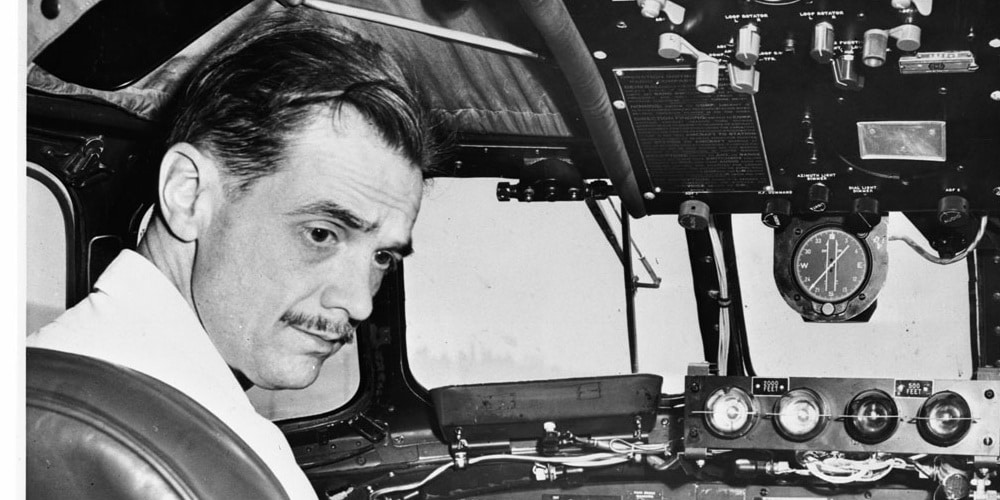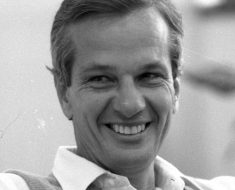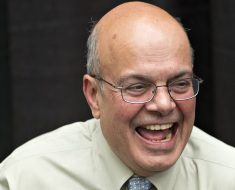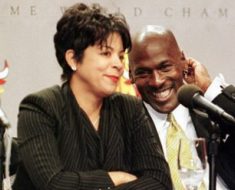
Howard Hughes net worth is $11 Billion. Also know about Howard Hughes bio, salary, height, age weight, relationship and more …
Howard Hughes Wiki Biography
Howard Robard Hughes Jr., simply known as Howard Hughes, was a famous American film producer and director, entrepreneur, philanthropist, engineer, as well as a pilot. In the 20th century, Howard Hughes was considered to be one of the richest people in the whole world. Hughes rose to prominence in 1920s, when he produced such films as “Scarface”, which later served as a basis for Brian De Palma’s movie of the same name, “The Outlaw” with Jane Russell, and a war film called “Hell’s Angels” starring Ben Lyon and James Hall, among many others.
In addition to being a film producer, Howard Hughes also excelled as a skillful pilot, who set numerous air speed records, and contributed to manufacturing such racing aircraft as the “H-4 Hercules” and “Hughes H-1 Racer”, both of which were developed by “Hughes Aircraft Company”. Hughes established “Hughes Aircraft Company” in 1932, as an aerospace and defense contractor, known for producing various aircrafts, missiles and probes.
“Hughes Aircraft Company” was not Hughes’ only business venture. In 1948, Hughes took control of the “Radio-Keith-Orpheum Pictures” company, often shortened to “RKO”, which specialized in film production and distribution. Hughes’ management of the company brought it to a total standstill and even decline, and it was later purchased from him by the “General Tire and Rubber” company.
In 1953, Howard Hughes founded the “Howard Hughes Medical Institute”, a non-profit medical research organization, which focuses on the research of genetics, immunology and molecular biology.
A well-known entrepreneur and a film director, how rich is Howard Hughes? According to sources, Howard Hughes’ net worth is estimated to be $4 billion, undoubtedly most of which came from his business ventures.
Howard Hughes was born in 1905, in Humble, Texas. Ever since his childhood, Hughes had been interested in technology, which later in life inspired him to establish a medical research center and a company that manufactured aircraft. Initially, Hughes enrolled in Rice University, yet he dropped his studies and decided to pursue a career in filmmaking instead. Some of his first films, namely “Two Arabian Knights” and “Everybody’s Acting” proved to be commercially profitable and even brought him an Academy Award in the category of Best Director. The majority of Hughes’ movies, including “Hell’s Angels”, “The Front Page” and “The Racket” brought him various nominations and awards, and turned out to be financially successful.
When Hughes established himself as a skilled filmmaker, he decided to venture into business. Among his many companies was “The Howard Hughes Corporation”, a company which dealt with the development and management of real estate. Howard Hughes also took over the “Hughes Tool Company”, which was founded by his father Howard R. Hughes Sr. in 1908. In 1972, Hughes agreed to work with the CIA in a secret operation called “USNS Hughes Glomar Explorer”, the main aim of which was to retrieve a Soviet submarine K-129, which sunk in 1968. The secret operation was also known as “Project Azorian”.
IMDB Wikipedia “Everybody’s Acting” “General Tire and Rubber” “H-4 Hercules” “Hughes Aircraft Company” “Radio-Keith-Orpheum Pictures” “Two Arabian Knights” “USNS Hughes Glomar Explorer” $11 Billion 1905 1976 6 ft 3 in (1.92 m) April 5 Ben Lyon Brian De Palma Business CIA December 24 Ella Rice Ella Rice (m. 1925–1929) Engineer Entrepreneur Film director Film producer GSF Explorer Howard Hughes Howard Hughes Net Worth. Aviation Howard R. Hughes Howard R. Hughes Sr. Howard Robard Hughes Hughes Aircraft Hughes H-1 Racer Hughes Tool Company Humble Hypochondriacs Inventor Investor James Hall Jane Russell Jean Peters Jean Peters (m. 1957–1971) John T. Conover Jr. Philanthropist Pilot Project Azorian Richest Billionaires RKO Pictures Scarface Sonny Sr. Summa Corporation Terry Moore Terry Moore (m. 1949–1976) Texas The Howard Hughes Corporation The Outlaw The World’s Greatest Womanizer Transport United States United States of America
Howard Hughes Quick Info
| Full Name | Howard Hughes |
| Net Worth | $11 Billion |
| Date Of Birth | December 24, 1905, Humble, Texas, United States |
| Died | April 5, 1976, Humble, Texas, United States |
| Place Of Birth | Humble |
| Height | 6 ft 3 in (1.92 m) |
| Profession | Entrepreneur, Engineer, Pilot, Investor, Film Producer, Film director, Philanthropist, Inventor |
| Education | Rice University, The Thacher School, California Institute of Technology |
| Nationality | United States of America |
| Spouse | Jean Peters (m. 1957–1971), Terry Moore (m. 1949–1976), Ella Rice (m. 1925–1929) |
| Nicknames | Howard Robard Hughes, Jr. , Sonny , The World’s Greatest Womanizer , Howard R. Hughes , John T. Conover |
| IMDB | http://www.imdb.com/name/nm0400652 |
| Awards | Collier Trophy |
| Nominations | Academy Award for Best Picture |
| Movies | Hell’s Angels, The Outlaw, Scarface, The Conqueror, His Kind of Woman, Jet Pilot, Two Arabian Knights, The Racket, The Las Vegas Story, The Front Page, Vendetta, Underwater!, The Sin of Harold Diddlebock, Flying Leathernecks, Cock of the Air, Sky Devils, Two Tickets to Broadway, The Mating Call, Sec… |
Howard Hughes Quotes
- We don’t have a monopoly. Anyone who wants to dig a well without a Hughes bit can always use a pick and shovel.
- My father told me, never have partners.
- I’m not a paranoid deranged millionaire. Goddamit, I’m a billionaire.
- Every man has his price, or a guy like me couldn’t exist.
Howard Hughes Important Facts
- Technically speaking, Hughes was nominated for two Oscars, as he produced Best Picture nominees The Racket (1928) and The Front Page (1931). However, until 1951, the Academy Award for Best Picture only recognized the film itself, and not its producers.
- Co-founded, with Preston Sturges, California Pictures, a low-budget production company.
- For a period of time in the 1940s-late 1950s, the Hughes Tool Co. ventured into the film and media industry when it bought the RKO companies, including: RKO Pictures; RKO Studios; RKO Theatres, a chain of movie theatres; the RKO Radio Network and a network of radio stations. In 1948 multi-millionaire businessman, film producer, film director and aviator Hughes gained control of RKO, a struggling major Hollywood studio, by acquiring 25% of the outstanding stock from ‘Floyd Odlum’ (QV)’s Atlas Corporation. Universal Pictures acquired the American distribution rights in 1951 of the 1948 J. Arthur Rank-Archers feature film The Red Shoes (1948), originally released in a small London art house movie theater in September of 1948. Hughes, so impressed with Michael Powell’s dance film starring the Sadler Well’s Ballet principal dancers Moira Shearer, Léonide Massine and Robert Helpmann that he wanted his own ensemble corps de ballet company. So he just decided to buy himself a ballet-dance company in an effort to expand the creative base of his RKO film studio acquisition. Hughes had been impressed with the success of “Les Ballets de Paris de Roland Petit.” An outstanding classical dancer as a youth, Roland Petit swiftly decided on a career as a rebel against the traditionalism of the Paris Opera Ballet, and before the age of 25 had created three of his most iconic ballets, “Le Jeune Homme et La Mort,” world premiere on 6/26/46, Les Ballets des Champs-Elysee, Theatre des Champs-Elysee, Paris; the Jean Cocteau ballet “Les Demoiselles de La Nuit,” world premiere Theatre Marigry, Paris 5/21/48, Les Ballet de Paris de Roland Petit, featuring Margot Fonteyn; and the ballet “Carmen,” world premiere in London, Prince’s Theatre, on 2/21/49, with the sultry young Jeanmaire as the lethal female destroying a hapless male. These ballets caused a sensation worldwide and Petit and Zizi Jeanmaire swiftly became the most exciting names in French dance, closely associating with Jean Cocteau, Édith Piaf, Yves Montand and the new intellectuals of Left Bank Paris. Hughes contracted Petit and his Paris-based “Ballet de Paris de Roland Petit” for film assignments, including all personal appearances in North America. Petit and his core dance company’s flight from Paris to Los Angeles’ airport was on Hughes’ own Trans-World-Airlines (TWA). Hughes acquired control of TWA in 1939, and after World War II led the expansion of the airline to serve Europe, the Middle East and Asia, making TWA a second unofficial flag carrier of the United States after Pan Am. The dance troupe, housed in a Culver City hotel, were assigned a film stage for intense preparatory workouts and dance rehearsals. After six months of isolation in Culver City, the troupe’s enthusiasm for their new North American venture had dwindled, with their intense serious practicing, rehearsing, exercising and with no stage nor film scheduled assignments, the core of dancers became extremely mutinous. En masse the Parisian rebels packed their luggage, arriving at the TWA Los Angeles air terminal with their round-trip tickets in hand, checking in for their return flight to Paris. The troupe of Francophiles did not know that their boss Hughes owned TWA. The TWA passenger agents alerted Hughes that a horde of “French-speaking gypsies” were at the TWA air terminal, demanding a return flight to Paris with their original TWA round-trip flight tickets in hand. RKO’s security division immediately descended upon the air terminal with a fleet of buses to round up Hughes’ herd of cattle, “the RKO-Ballet de Paris de Roland Petit” dance company, confiscating all of the ticket bills the TWA ticketing agents had collected. Returning to their hotel, the troupe was assured that they would be put to work on a Hollywood musical film. Samuel Goldwyn, his production company located at RKO’s “The Lot,” 1041 North Formosa Avenue in Hollywood, was in pre-production to star Danny Kaye in an original musical film based on Hans Christian Anderson, with a story by Myles Connolly, a screenplay by Moss Hart and Ben Hecht, with words and original music composed by Frank Loesser. Goldwyn had initially offered the film’s ballerina role to Moira Shearer. Since Goldwyn was under an RKO contract, Hughes ordered him to use Petit, Zizi Jeanmaire and Petit’s Ballet de Paris dance troupe. Petit insisted on his French stage production
- Hughes was an avid golfer and wanted to play on the golf tour, but gave it up because Bobby Jones told him that he couldn’t win.
- When he took over RKO Pictures, he canceled its most expensive project, a film version of the popular novel “The Robe.” The producer, Frank Ross, was finally able to get the film made at 20th Century-Fox. It was the first film released in CinemaScope and became one of the biggest hits of the 1950s.
- “Howard Hughes: The Hidden Years,” James Phelan’s account of the elusive billionaire’s final years, was written in co-operation with Hughes’ waiter and barber, men who had intimate knowledge of the idiosyncratic Hughes’ bizarre final days. The book was published in 1976, shortly after the tycoon’s death.
- In 2004 Guido Deiro claimed he flew Hughes to the Cottontail Ranch brothel, 150 miles north of Las Vegas, on 29 December 1967, then took a nap while Hughes enjoyed himself. After Deiro awoke, he said the madame told him that Hughes had left; Melvin E. Dummar would claim weeks after Hughes died that he found a man who claimed to be Hughes wandering seven miles south of the Ranch on 29 December 1967. Upon his return to Las Vegas, Deiro claimed a subordinate of Hughes executive Frank Gay ordered him to surrender his flight log to erase all evidence of the trip. Bolstered by Deiro’s story and a book about Hughes and Dummar by Gary Magnesen, Dummar sued Gay and Hughes’ cousin William Lummis–declared Hughes’ primary beneficiary after the Clark County (Nevada) District Court ruled Hughes had died intestate–alleging fraud and conspiracy to conceal evidence proving the so-called “Mormon Will”, which granted Dummar a 1/16th share of Hughes’s $2-billion estate, was genuine. On 9 January 2007 the United States District Court for the District of Utah dismissed the suit.
- Restauranteur Dave Chasen reported that Hughes ate the same dinner all the time: a triple glass of tomato juice, a salad, a thin butterfly steak and coffee. Chasen also observed that, like most Hollywood gourmets, he was on the phone constantly.
- Was Stan Lee’s inspiration for Tony Stark, AKA Iron Man. Like Hughes, Stark inherited a business from his father. As a tribute to Hughes, Tony Stark’s father was named Howard Stark.
- He was a staunch supporter of the Republican Party and an active anti-communist.
- The hangar that used to house his famous airplane, the “Spruce Goose,” has been used in subsequent years as a filming studio.
- Played by Leonardo DiCaprio in The Aviator (2004), Victor Holchak in Hughes and Harlow: Angels in Hell (1977), Tommy Lee Jones in The Amazing Howard Hughes (1977), Jason Robards in Melvin and Howard (1980), Terry O’Quinn in The Rocketeer (1991), Dean Stockwell in Tucker: The Man and His Dream (1988), David Neff in Bettie Page: Dark Angel (2004), and Milton Buras in The Hoax (2006). Robards and DiCaprio were nominated for an Oscar for his portrayal.
- On July 7, 1946, Rosemary DeCamp and her husband were in their house in Beverly Hills, California, when an aircraft piloted by Hughes crashed into the roof of the house next door, and its wing was torn off and sliced through the roof of her house, landing in the bedroom, where she and her husband were. The plane, an experimental model Hughes had developed called the XF-11, had experienced propeller reversal on the right engine after taking off from the airport at nearby Culver City. It finally came to rest after crashing through the wall of the house of another of DeCamp’s neighbors and exploding. Hughes was rescued from the cockpit by Marine Sgt,. William Lloyd Durkin. Hughes was severely injured with a broken leg, multiple cracked ribs on his left side, a dislodged heart, a fractured skull, burns and abrasions over 65% of his body. He was given a 50-50 chance to survive. He paid for the damage to the houses in the neighborhood out of his own pocket and sent Durkin a weekly paycheck until the day he died.
- Became obsessed with Communism during the McCarthy “Red Scare” era. His film The Whip Hand (1951) was originally about a group of Nazi scientists who smuggled the body of Adolf Hitler into the US and worked to revive Hitler in order to try to take over the world again. After it was finished Hughes had it reshot, at great expense, to change the villains into Nazi scientists who are now working for the Communists and have taken over a small American town in order to test germ warfare experiments on its citizens before they unleash the deadly viruses in the US. The film was a major flop.
- Had a strong aversion to black people. For many years he had a private screening room at the Samuel Goldwyn Studios in Hollywood where he would watch movies by himself at night. In 1958 he found out that the cast of Porgy and Bess (1959), an all-black musical being made on the lot, was using the screening room each afternoon to watch the footage that had been shot the previous day. Horrified that blacks used the same room he did–and that some may even have sat in the same seat he did–he shut down the screening room, left the Goldwyn lot and, for the remainder of his life, never returned to it. Hughes was also known as a rabid anti-Semite but specific examples of him acting on his feelings are scarce; like many ultra-conservative anti-Communists of the post-WWII era, Hughes believed that many Jews were either Communists or sympathetic to Communism.
- Houston has two major commercial airports: William P. Hobby Airport, and Houston Intercontinental Airport. For a brief period, Hobby Airport was renamed Howard Hughes Airport. Houstonians objected to it being named after a living person, so this change was short-lived and the name eventually reverted back to Hobby Airport. In 1997 Intercontinental Airport was renamed Bush Intercontinental, after the still-living President George Bush, whose son was Governor of Texas at the time.
- The Aviator (2004), the movie based on his life, was released on the day after what would have been his 99th birthday.
- His reported appearance when he was found dead was extremely bizarre. He was covered in uncut, matted hair, had extremely long toenails, and the once strapping 6’4″ billionaire weighed an incredibly low 90 pounds.
- When he produced films, he became obsessed with busty actresses and famously invented a prototype of the push-up bra to make Jane Russell as busty as possible in The Outlaw (1943). Most of the movies he produced are typlified by beautiful, half-naked women and nonsensical action sequences.
- It has variously been hypothesized that his crazed behavior in his later reclusive years was caused by brain damage resulting from a series of accidents; OCD; bipolar disorder; or even paranoid-schizophrenia.
- He became obsessed with the “Communist threat” in the early 1950s, having written a series of paranoid articles on the subject that he sent out to newspapers from seclusion.
- In the 1950s Robert Mitchum was selected by Hughes to appear in a series of films he was producing. Hughes considered Mitchum a “friend,” but (as a paranoid recluse) hardly met the actor. Mitchum was halfway put off and halfway amused by this “crazy old man” and clearly saw that he was a surrogate for Hughes as the strapping actor “romanced” young starlets on screen.
- Romantically linked with Katharine Hepburn, Bette Davis, Olivia de Havilland, Ginger Rogers, Ava Gardner, and Faith Domergue. He went out of his way to “discover” attractive young starlets. He continued this until he stopped producing films in the late 1950s.
- Humble, Texas, where he was born, is pronounced “UM-bull.” The ‘h’ is silent.
- Authorized to be awarded a Congressional Gold Medal, 7 August 1939 (53 Stat. 1525). Award was “… in recognition of the achievements of Howard Hughes in advancing the science of aviation and thus bringing great credit to his country throughout the world[.]”
- After Hughes died, Terry Moore claimed they had secretly married on a yacht in international waters in 1949 and never divorced; these “marriages” were ruses Hughes was known to employ in order to take advantage of young women. Despite the fact that Moore married two other men after she “married” Hughes, his estate settled with her for an undisclosed amount in 1984.
- In public he would often speak with his hand covering his mouth, for fear of being lip-read.
- Attended the prestigious Rice University in the 1920s, before dropping out and moving to Hollywood and studying at Cal Tech.
- In his later years, he insisted that his personal assistants be Mormons (members of the Church of Jesus Christ of Latter-Day Saints). Reportedly, this was because Hughes did not want any of his personal assistants drunk on the job, and Mormons are forbidden to drink alcohol.
- He once had an air purifier installed in a car with sealed windows. The purifier cost more than the car, and took up most of the trunk.
- Was a major stockholder in an airline that later became TWA.
- His father was the inventor of the “Hughes Rock Eater,” a self-sharpening drill bit used for drilling oil wells that is still in use today. Hughes inherited several million dollars but earned the vast majority of his wealth from his own business ventures. Hughes Aircraft and Hughes Helicopters alone were worth $5.5 billion when they were finally sold in the early 1980s.
- While he was staying in Las Vegas’ Desert Inn Hotel-Casino resort, he bought the establishment in order to avoid being evicted.
- He bought Las Vegas television station KLAS (Channel 8), so that he could watch movies into the night. If he fell asleep during a film, he would call up the station and order that the scene he missed be replayed.
- The Las Vegas casinos he once owned were Castaways, Desert Inn, Frontier, Landmark, Sands and Silver Slipper. All have since been demolished.
- Nephew of actor/screenwriter Rupert Hughes.
- Before his death, he lived as a recluse, and Albert R. Broccoli (the producer of the James Bond franchise) used his reclusiveness from the public as a model for the character Willard Whyte in Diamonds Are Forever (1971). Hughes was a fan of the James Bond films, and he kept a 16mm print of the film as a part of his private collection. Broccoli also gave him 16mm print films of all the earlier Bond-films.
- Ice Station Zebra (1968) is reported to have been his favorite movie (the 2005 DVD release was packaged with a trailer for The Aviator (2004)).
Howard Hughes Filmography
| Title | Year | Status | Character | Role |
|---|---|---|---|---|
| Jet Pilot | 1957 | producer – uncredited | Producer | |
| The Conqueror | 1956 | producer – uncredited | Producer | |
| Son of Sinbad | 1955 | executive producer | Producer | |
| Underwater! | 1955 | executive producer – uncredited | Producer | |
| The French Line | 1953 | executive producer – uncredited | Producer | |
| Second Chance | 1953 | producer – uncredited | Producer | |
| Macao | 1952 | executive producer – uncredited | Producer | |
| The Las Vegas Story | 1952 | producer – uncredited | Producer | |
| Two Tickets to Broadway | 1951 | producer – uncredited | Producer | |
| The Whip Hand | 1951 | executive producer – uncredited | Producer | |
| His Kind of Woman | 1951 | executive producer – uncredited | Producer | |
| Vendetta | 1950 | producer | Producer | |
| The Tattooed Stranger | 1950 | executive producer – uncredited | Producer | |
| The Sin of Harold Diddlebock | 1947 | producer – uncredited | Producer | |
| Behind the Rising Sun | 1943 | producer – uncredited | Producer | |
| The Outlaw | 1943 | producer | Producer | |
| Scarface | 1932 | producer – uncredited | Producer | |
| Sky Devils | 1932 | producer | Producer | |
| Cock of the Air | 1932 | producer | Producer | |
| The Age for Love | 1931 | producer – uncredited | Producer | |
| The Front Page | 1931 | producer – uncredited | Producer | |
| Hell’s Angels | 1930 | producer – uncredited | Producer | |
| The Mating Call | 1928 | producer – uncredited | Producer | |
| The Racket | 1928 | producer – uncredited | Producer | |
| Two Arabian Knights | 1927 | producer – uncredited | Producer | |
| Swell Hogan | 1926 | producer | Producer | |
| Jet Pilot | 1957 | presenter | Miscellaneous | |
| The Conqueror | 1956 | presenter | Miscellaneous | |
| Son of Sinbad | 1955 | presenter | Miscellaneous | |
| Underwater! | 1955 | presenter | Miscellaneous | |
| She Couldn’t Say No | 1954 | presenter | Miscellaneous | |
| The French Line | 1953 | presenter | Miscellaneous | |
| Devil’s Canyon | 1953 | presenter | Miscellaneous | |
| Second Chance | 1953 | presenter | Miscellaneous | |
| Affair with a Stranger | 1953 | presenter – uncredited | Miscellaneous | |
| Angel Face | 1953 | presenter | Miscellaneous | |
| One Minute to Zero | 1952 | presenter | Miscellaneous | |
| The Las Vegas Story | 1952 | presenter | Miscellaneous | |
| Two Tickets to Broadway | 1951 | presenter | Miscellaneous | |
| The Racket | 1951 | presenter | Miscellaneous | |
| Flying Leathernecks | 1951 | presenter | Miscellaneous | |
| His Kind of Woman | 1951 | presenter | Miscellaneous | |
| The Outlaw | 1943 | presenter | Miscellaneous | |
| Scarface | 1932 | direction supervisor – uncredited / presenter | Miscellaneous | |
| Sky Devils | 1932 | presenter | Miscellaneous | |
| The Front Page | 1931 | presenter | Miscellaneous | |
| Hell’s Angels | 1930 | presenter | Miscellaneous | |
| The Mating Call | 1928 | presenter | Miscellaneous | |
| The Racket | 1928 | presenter – as Howard R. Hughes | Miscellaneous | |
| Two Arabian Knights | 1927 | presenter | Miscellaneous | |
| The Outlaw | 1943 | Director | ||
| Hell’s Angels | 1930 | Director | ||
| His Kind of Woman | 1951 | uncredited | Writer | |
| Vendetta | 1950 | director: 1949 added sequences and pickup shots – uncredited | Assistant Director | |
| America’s Book of Secrets | 2013 | TV Series documentary | Himself | Self |
| The American Aviator: The Howard Hughes Story | 2006 | Himself | Self | |
| Paramount News Special: 1947, Year of Division | 1947 | Documentary short | Himself – subject of Congressional investigation | Self |
| Hollywood the Golden Years: The RKO Story | 1987 | TV Series documentary | Himself | Archive Footage |
| F for Fake | 1973 | Documentary | Himself | Archive Footage |
| Transatlantic Hop | 1953 | Short | Howard Hughes | Archive Footage |
| Welcome to the Basement | 2016 | TV Series | Himself | Archive Footage |
| Conspiracy | 2015 | TV Series documentary | Himself – Billionaire Businessman | Archive Footage |
| Impossible Engineering | 2015 | TV Series documentary | Himself – Pilot, Spruce Goose | Archive Footage |
| Tony Curtis: Driven to Stardom | 2011 | Documentary | Himself | Archive Footage |
| Modern Marvels | 2004-2011 | TV Series documentary | Himself | Archive Footage |
| The Will | 2011 | TV Series | Himself | Archive Footage |
| 60 Minutes | 2003-2008 | TV Series documentary | Himself (segment “Howard Hughes”) / Himself – Billionaire (segment “The Aviator and the President”) | Archive Footage |
| Where I Stand: The Hank Greenspun Story | 2008 | Documentary | Himself | Archive Footage |
| Best Evidence | 2007 | TV Series documentary | Himself | Archive Footage |
| Underworld Histories | 2007 | TV Series | Himself | Archive Footage |
| The Hoax | 2006 | Himself (uncredited) | Archive Footage | |
| American Experience | 2005 | TV Series documentary | Himself | Archive Footage |
| History vs. Hollywood | 2004 | TV Series documentary | Himself | Archive Footage |
| Howard Hughes: His Life, Loves and Films | 2004 | Video documentary | Himself | Archive Footage |
| Sex at 24 Frames Per Second | 2003 | Video documentary | Himself | Archive Footage |
| Cleavage | 2002 | TV Movie documentary | Himself | Archive Footage |
| Cubby Broccoli: The Man Behind Bond | 2000 | TV Short documentary | Himself | Archive Footage |
| Golden Saddles, Silver Spurs | 2000 | TV Movie documentary | Archive Footage | |
| Biography | 1999-2000 | TV Series documentary | Himself | Archive Footage |
| Howard Hughes: His Women and His Movies | 2000 | TV Movie documentary | Himself | Archive Footage |
| Universe Beneath the Sea | 1997 | TV Mini-Series documentary | Himself | Archive Footage |
| Great Romances of the 20th Century: Elizabeth Taylor and Richard Burton | 1997 | TV Short documentary | Himself | Archive Footage |
| The Real Las Vegas | 1996 | TV Series documentary | Himself | Archive Footage |
| American Justice | 1996 | TV Series documentary | Himself | Archive Footage |
| Katharine Hepburn: All About Me | 1993 | TV Movie documentary | Himself | Archive Footage |
| Tribulation 99: Alien Anomalies Under America | 1992 | Himself | Archive Footage |




